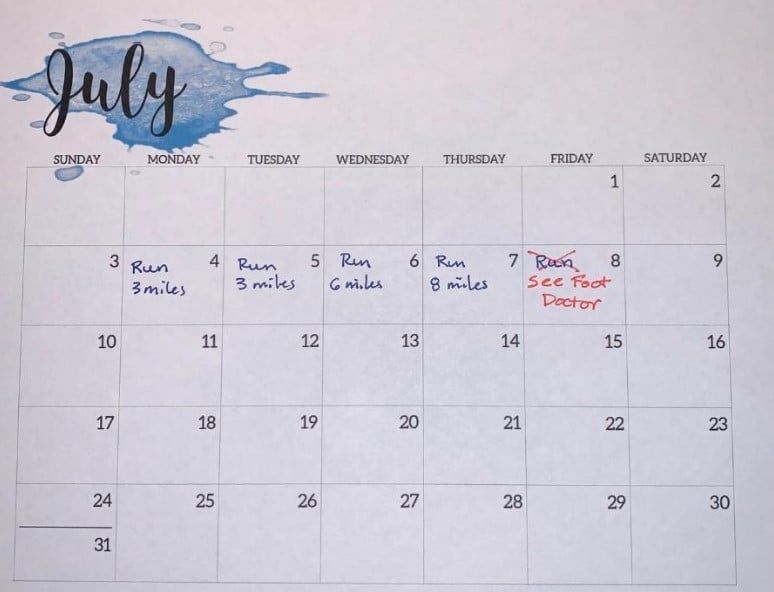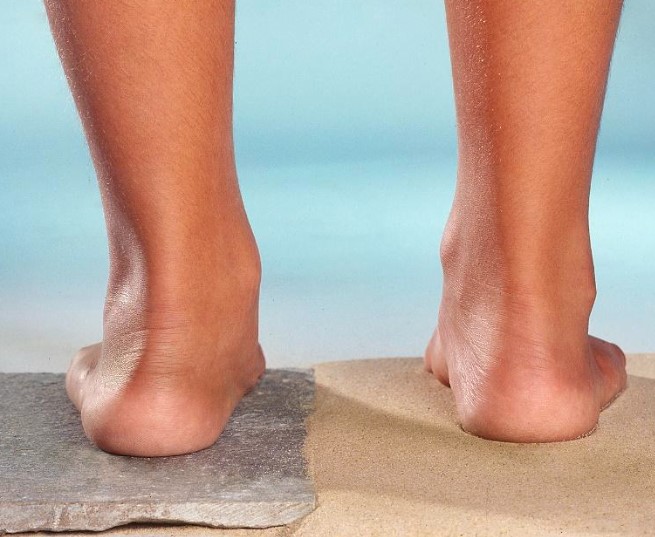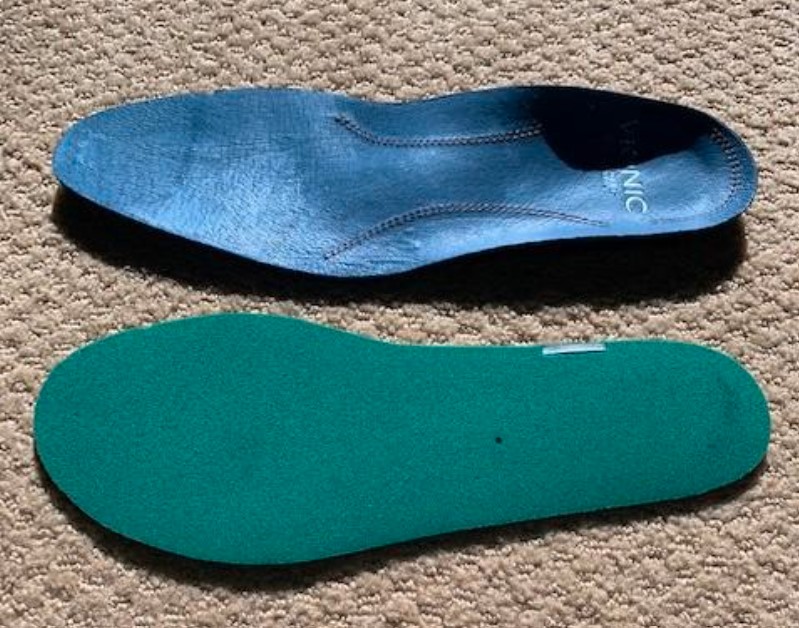Five Keys to Foot Health
By Brian Hoke, DPT, SCS
“When your feet hurt, you hurt all over.” This familiar quote is often attributed to Socrates (399 BC). Many of us who have experienced foot injuries can attest to the truth in this simple statement. Heel pain, ankle injuries, aching arches, and painful bunions are just a few conditions that can sap enjoyment from a simple walk around the neighborhood. I would like to offer five simple suggestions to help you maintain your foot health.
Schedule
Our body responds and adapts to gradual increases in the demands we put on it. One of the most basic principles of maintaining foot health is to avoid rapid changes in the amount of time we are on our feet, particularly for impact exercises such as distance running. Avoid the three too’s: “too much, too fast, or too soon.” Two groups often mistake increasing their activity level too quickly (Figure 1). The first is the novice who decides to “get in shape” by jumping into vigorous exercise without adequate recovery days. The second group who often make the same mistake are those who are “chronically fit” and who have exercised regularly for years and are returning to exercise after an injury has caused them to stop for weeks or months. We suggest you increase your “on your feet” exercise time by no more than 10% per week. This will allow your body to adapt to the stresses you place on it.
Figure 1

Stretching
Maintaining good flexibility in your leg muscles is key to maintaining good foot health. The most common tightness is found in the calf muscle, which will be tightest when we wake in the morning or sit for extended periods. To stretch this muscle properly, keep the leg straight and bend the ankle upward so that you feel an intense stretch in your calf. Hold the stretch for 15 seconds and repeat this 5 times.
Strength
The foot and ankle are surrounded by a myriad of muscles that act to keep the forces of walking and running correctly centered. When these muscles are weakened by injury or a lack of activity, the forces moving through our foot may become off-center, quickly breaking down the tissues under excessive stress. A few simple exercises can keep these muscles “tuned up.” The first is by simply drawing the alphabet with your foot, and repeating this three times. You can also stand up and lift the front of your foot off the ground 10 times, then reverse the motion and raise your heels by coming up on the balls of your feet. We suggest 3 sets of 10 in each direction.
Surfaces
We often spend our entire day on artificial, man-made surfaces. Our foot is made for more forgiving natural surfaces such as grass and sand. When we are on a natural surface, it gives us little to accept our weight. When we are on hard man-made surfaces, it is our feet that must adapt. Simply stated, if your luggage rolls well on the surface, it is not a great surface for your foot! The hardness of the surface may cause the foot to roll inward excessively in an attempt to become softer. (Figure 2) When possible, we should try to vary the surfaces we stand on and include some natural surfaces, particularly if we use a walking or running program for personal fitness.
Figure 2

Shoes
In a forgiving natural environment, we may be able to function without using footwear, but on the man-made surfaces we more commonly encounter in our day, we need to have footwear that will provide an interface between the hard, flat unforgiving surface and our supple compliant foot with all of its natural curves. Unfortunately, most of the shoes manufactured have a flat internal footbed (insole) which does not adequately support the foot or disperse pressure. The design teams at companies such as Vionic have addressed this problem by making a contoured insole that closely matches the normal structural anatomy of the foot. (Figure 3) This protects and supports the foot, and allowing more contact area also reduces peak pressure areas. Some Vionic models integrate the natural curves into the cushioning layer of the shoe (midsole) to cradle the foot in its natural position.
Following these recommendations can help you keep your feet healthy and allow you to enjoy the many activities in life where we need to be on our feet.
Figure 3

About the Author:
Specializing in orthopedic and sports physical therapy, Brian Hoke, DPT, SCS, has a particular interest in the biomechanical factors influencing lower limb rehabilitation. He is the owner of Atlantic Physical Therapy, a private practice in Virginia Beach, VA.
Brian is a board-certified Clinical Specialist in Sports Physical Therapy, a distinction achieved by fewer than 600 physical therapists in the U.S. He works with athletes of all levels—from recreational runners to elite professional and Olympic athletes. He has contributed chapters to two textbooks on the treatment of running injuries.
Brian is an avid educator, lecturing extensively in the U.S. and internationally. Since 1985, he has been a faculty member of the popular continuing medical education seminar, “When the Feet Hit the Ground, Everything Changes.” He co-developed and has taught the “Take the Next Step” course since 1990. In addition, he has been an adjunct faculty member of physical therapy programs at Old Dominion University and Touro College on Long Island, NY.
Brian’s expertise in sports physical therapy is a particular asset to Vionic’s athletic line of footwear. He and Phillip Vasyli have also collaborated to create a foot orthotic designed for problems with supination—when feet roll outward too much.

Leave a Reply